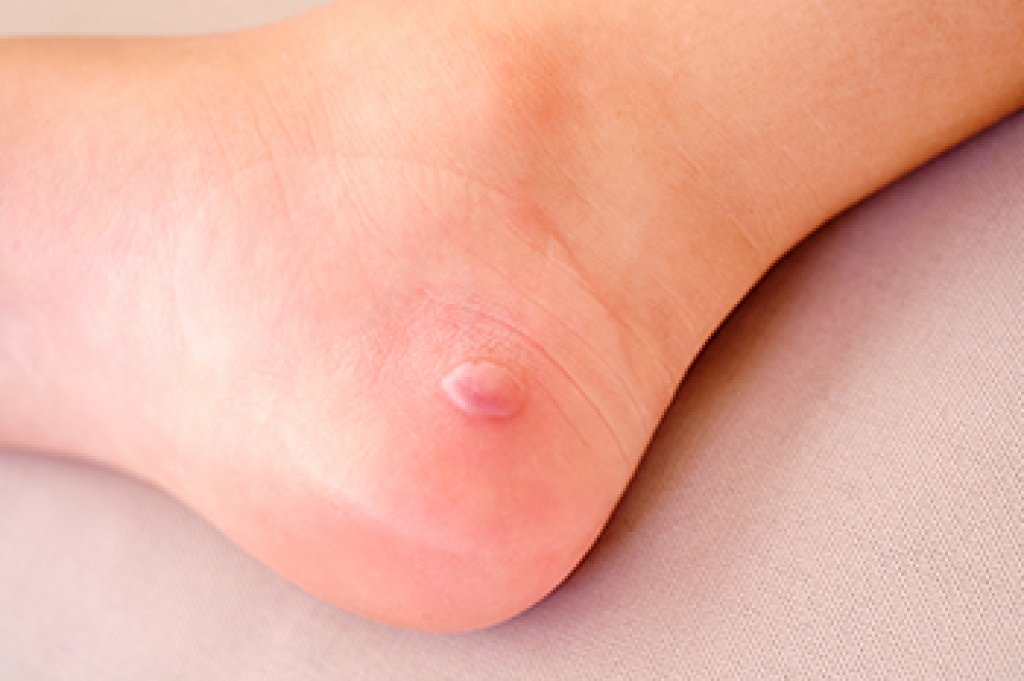
Friction blisters are small fluid-filled pockets that form on the skin, often caused by rubbing, heat, or moisture. They commonly develop on the feet from wearing tight or ill-fitting shoes, walking or running long distances, or wearing damp socks. The friction causes the layers of skin to separate, allowing fluid to collect and form a bubble-like sore. Symptoms include redness, tenderness, swelling, and a clear or sometimes bloody fluid inside. Blisters may be painful, especially when pressure is applied, and can become infected if popped or cared for improperly. Infected blisters may appear red, warm, or filled with pus. A podiatrist can diagnose the type and severity of a blister and determine if there is an underlying cause like poor foot mechanics or inappropriate footwear. Treatment includes draining the blister safely to prevent infection, recommending footwear changes, or applying protective padding. If you have a painful friction blister, it is suggested that you schedule an appointment with a podiatrist for effective prevention tips and treatment solutions.
Blisters are prone to making everyday activities extremely uncomfortable. If your feet are hurting, contact Derek Smith, DPM of Oklahoma. Our doctor can provide the care you need to keep you pain-free and on your feet.
Foot Blisters
Foot blisters develop as a result of constantly wearing tight or ill-fitting footwear. This happens due to the constant rubbing from the shoe, which can often lead to pain.
What Are Foot Blisters?
A foot blister is a small fluid-filled pocket that forms on the upper-most layer of the skin. Blisters are filled with clear fluid and can lead to blood drainage or pus if the area becomes infected.
How Do Blisters Form?
Blisters on the feet are often the result of constant friction of skin and material, usually by shoe rubbing. Walking in sandals, boots, or shoes that don’t fit properly for long periods of time can result in a blister. Having consistent foot moisture and humidity can easily lead to blister formation.
Prevention & Treatment
It is important to properly care for the affected area in order to prevent infection and ease the pain. Do not lance the blister and use a Band-Aid to provide pain relief. Also, be sure to keep your feet dry and wear proper fitting shoes. If you see blood or pus in a blister, seek assistance from a podiatrist.
If you have any questions, please feel free to contact our offices located in Ponca City, and Stillwater, OK . We offer the newest diagnostic and treatment technologies for all your foot care needs.
